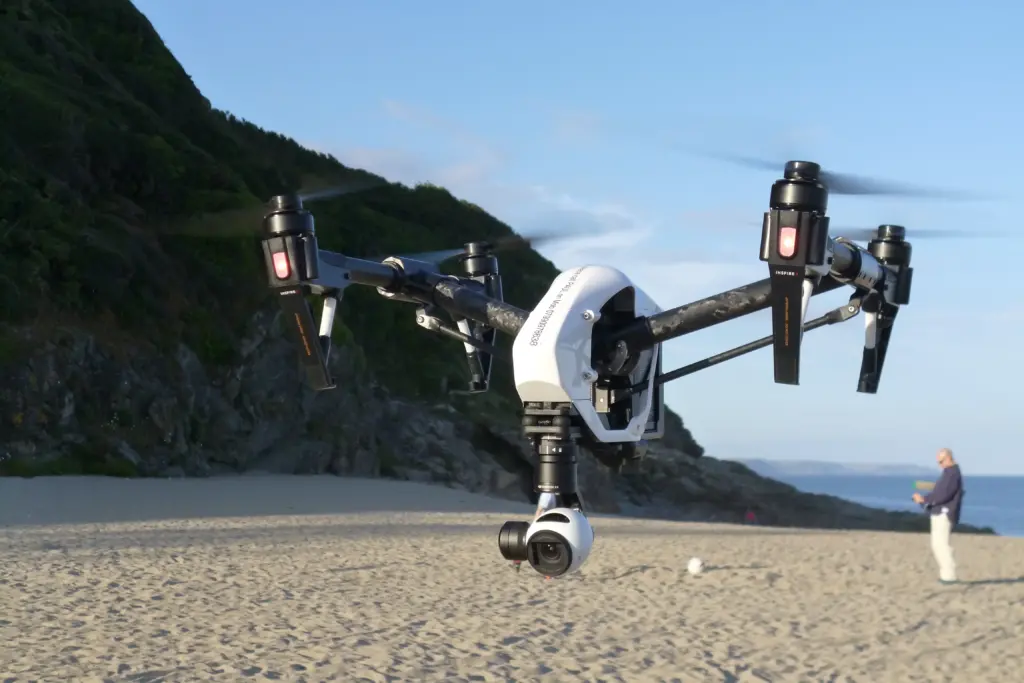DJI this week announced its first-ever FPV drone, bringing drone racing to the masses with a ready-to-fly racing drone. Aptly named the ‘DJI FPV’, this drone is largely ready for takeoff right out of the box.
Priced at $2,099, could DJI’s new FPV drone be the golden ticket to bringing drone racing to the masses?

The first major step for DJI into the world of FPV
DJI has never before built a drone specifically built for FPV drone racing.
Though for what it’s worth, it’s been a while since DJI has announced a completely new drone, period. Most of DJI’s latest product launches have been iterations of existing drones, such as the recently-launched Mini 2 that improved upon the Mavic Mini.
Still, DJI has been around for 15 years now, and this is the first time the company has really leaned into the world of FPV drone racing, despite the fact that drone racing has been popular for years now.
DJI did launch a product in 2017 called DJI Goggles, which are essentially the company’s own brand of FPV Goggles (but no actual FPV drone, of course). It later introduced DJI Goggles RE (RE is short for Racing Edition), which gave DJI’s OcuSync video transmission module a low-latency, high-performance camera digital video signal from up to 7 km away. There’s also an entire DJI Digital First Person Viewing (FPV) Transmission System, which included DJI FPV goggles, an FPV Air Unit Transmission Module, an FPV remote controller and an FPV camera launched in August 2019 (again, no actual drone) for about US$800.
But this March, things majorly changed when the company launched DJI FPV.
“It can fly like a racer, hover like a traditional drone, accelerate like a homebuilt project and stop faster than any of them,” said Ferdinand Wolf, Creative Director, DJI Europe said in a prepared statement.
Among its most impressive specs:
- It can reach maximum speeds of 87 mph.
- It’s capable of a maximum acceleration of 0-62 mph in just two seconds.
- Flight modes based on skill level (Normal, Sport and Manual).
- O3, the third iteration of DJI’s proprietary OcuSync technology.
- 4K/60fps 120 Mbps camera, with the option to film in 4x slow motion in 1080p and 120 fps.
How a new FPV drone from DJI fits into the future of drone racing
With or without the new DJI FPV drone, FPV drone racing is already growing. A 2020 report from Transparency Market Research predicted that drone racing could become a $786 million by 2027.
In fact, DRL has already raised millions of dollars in funding. Drone Racing League said its 2020 average viewership increased by nearly 200%, its virtual drone racing participation increased by 90%, and its social media fanbase grew by 60%.
Still, it seems unlikely that top-tier racers would fly a DJI FPV drone competitively. While the DJI FPV drone can fly at more than 80 mph, that’s still far less than the Guinness World Record for the Fastest Ground Speed by a battery-powered remote-controlled quadcopter, which is held by the DRL RacerX at 163.5mph. Not to mention, racers tend to fly drones that they can customize the specs to a level you wouldn’t be able to with the DJI FPV drone.
But this could unlock the world of FPV to a whole new demographic of people who haven’t been ready to build their own drones (which has largely been the case in the drone racing industry thus far).
An interesting year for DJI
The news of an FPV drone comes at an interesting time for DJI. The consumer/photographer drone market has lost much of the hype and pizazz it had a couple years ago. As some like to say, the drone hype bubble has burst. The commercial/enterprise drone market is largely thriving. The FPV drone market hasn’t seem huge adoption, but it has potential to be a sleeping giant. And where does DJI fit into all of this?
The growth potential of the consumer/photographer drone market is dwindling. The enterprise market should theoretically have potential, but perhaps not if you’re a Chinese company. A recent uptick of anti-Chinese sentiment, perhaps induced by the Trump Administration, has posed challenges for DJI. Perhaps most notably, the U.S. government in December 2020 added DJI to its restricted trade list, alongside other big Chinese companies such as China’s top chipmaker, SMIC. That’s among other challenges for Chinese tech companies like DJI, including a proposed executive order under former President Trump that would ban all federal departments and agencies from buying or using foreign-made drones. DJI may be hedging its bets of how far its commercial drones can grow in the U.S.
That leaves drone racing as a possible untapped vertical with huge growth potential, especially if it catches onto the mainstream. It seems as though the launch of this new FPV drone could be a pivotal moment not just for exposing wider audiences to the drone racing industry, but it could be a pivotal moment for the trajectory of DJI.
The post DJI’s expansion, its new FPV drone, and how it fits into the drone racing industry appeared first on The Drone Girl.







